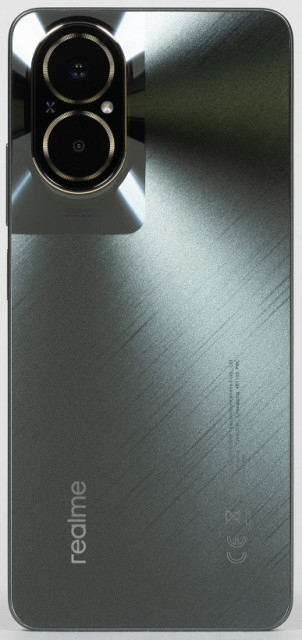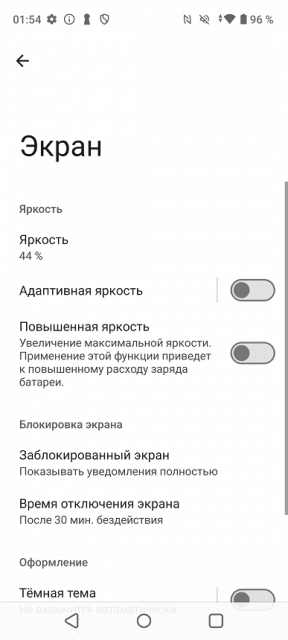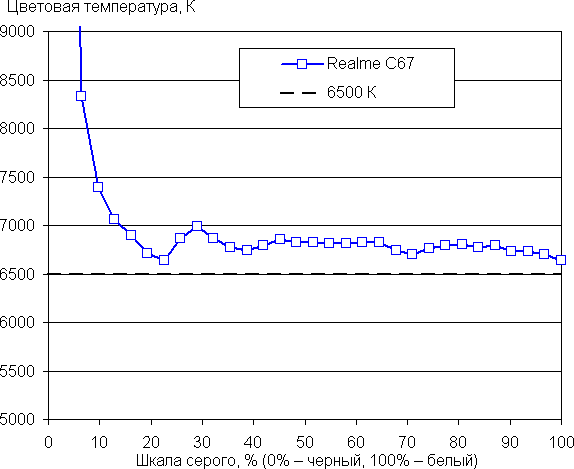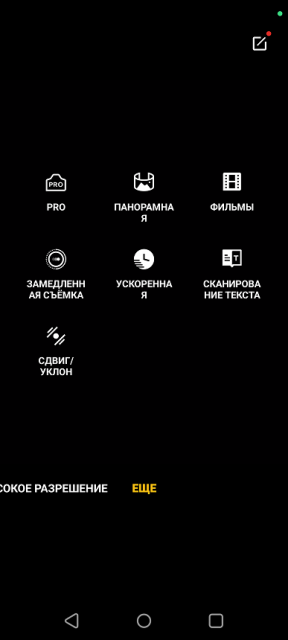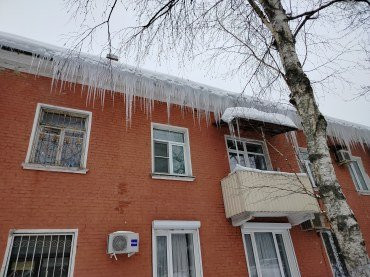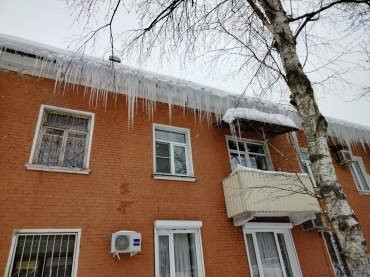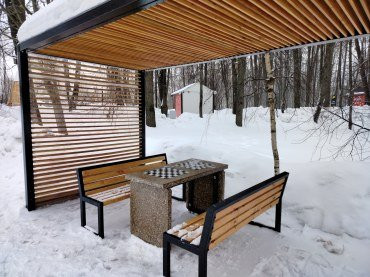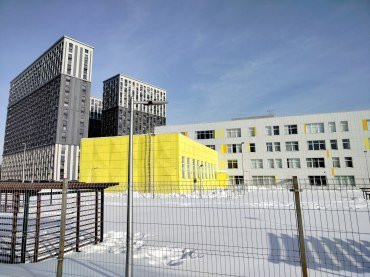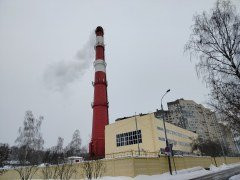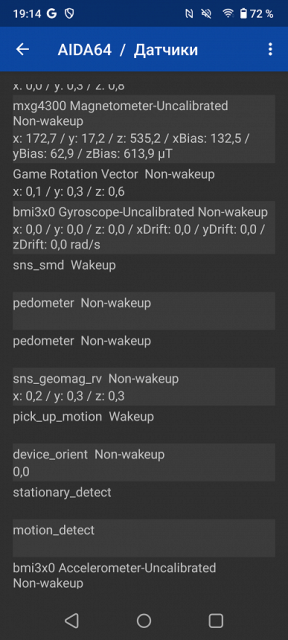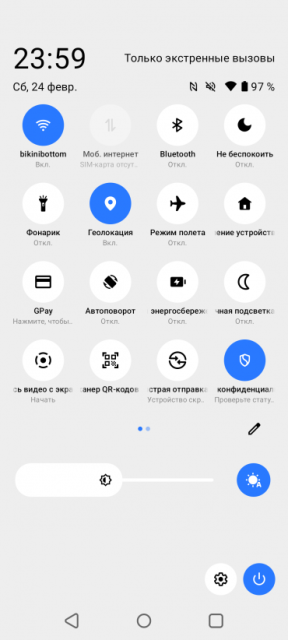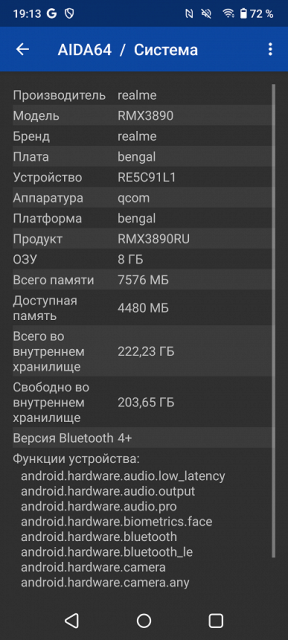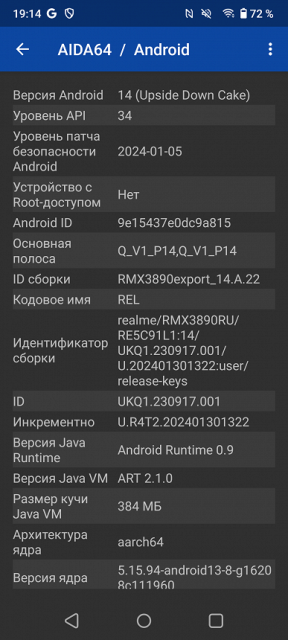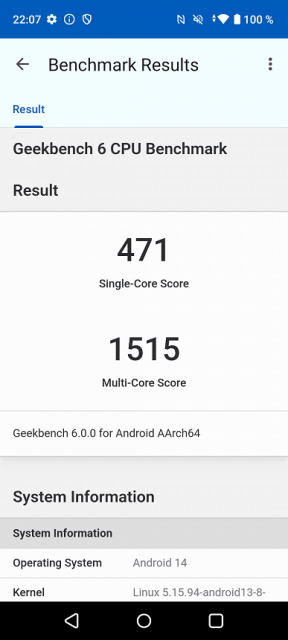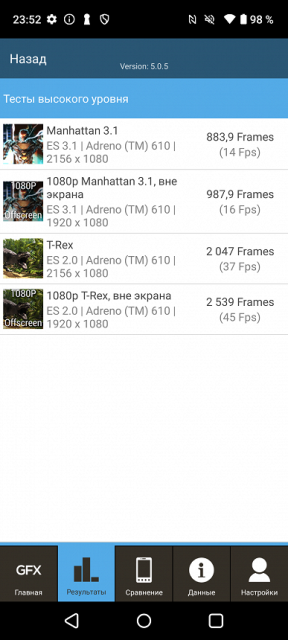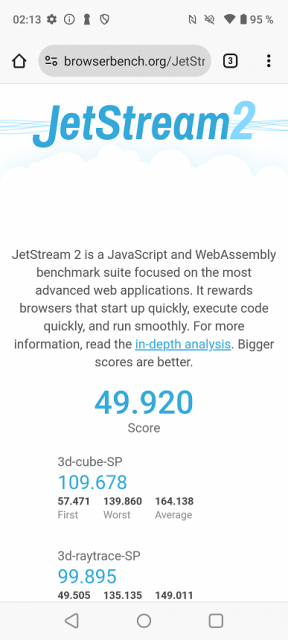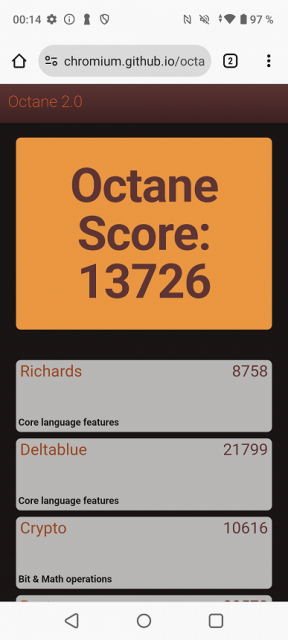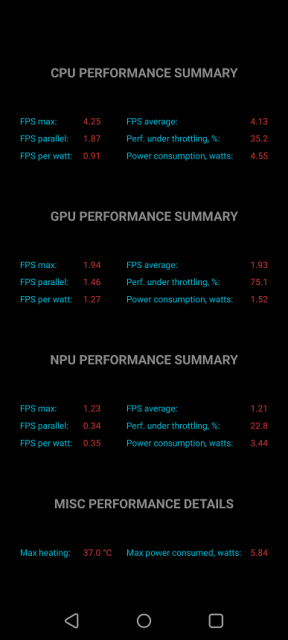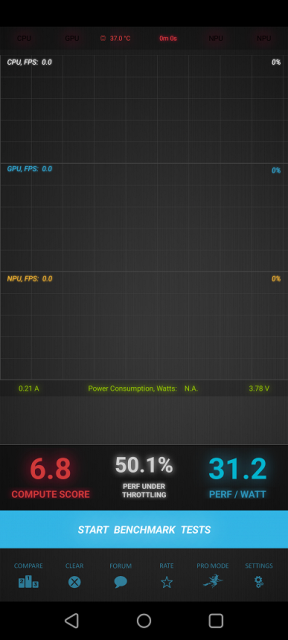Realme C67 is the latest updated model in the most affordable smartphone series from the brand. It replaces the Realme C55 and is expected to offer improved specifications such as a brighter screen, a more powerful processor and an interesting camera.
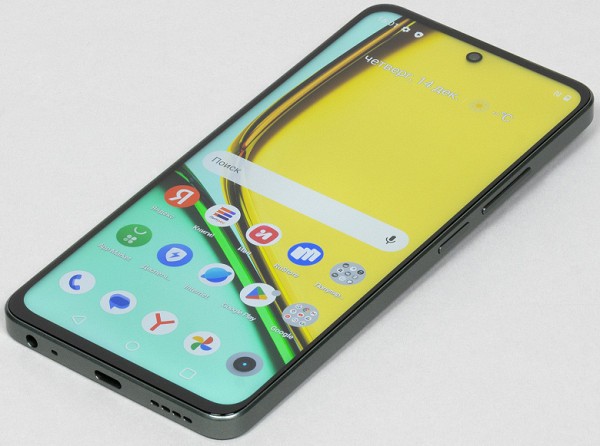
Key Features of Realme C67 (Model RMX3890)
- SoC Qualcomm SM6225 Snapdragon 685, 8 processor cores (4×Cortex-A73 @2.8 GHz + 4×Cortex-A53 @1.9 GHz)
- GPU Adreno 610
- Operating system Android 14, Realme UI
- Touch display IPS, 6.72″, 1080×2400, 90 Hz, 392 ppi
- RAM 6/8 GB, internal memory 128/256 GB
- microSD support (independent slot)
- Nano-SIM support (2 pcs.)
- Networks 2G GSM, 3G WCDMA, 4G LTE
- GPS, Glonass, Galileo, BDS
- Wi-Fi 5 (2.4/5 GHz)
- Bluetooth 5.0, A2DP, LE
- NFC
- USB 2.0 Type-C, USB OTG
- 3.5mm headphone audio output
- Cameras 108 MP + 2 MP, video 1080p@30 fps
- Front camera 8 MP
- Proximity and lighting sensors, magnetic field, accelerometer, gyroscope
- Fingerprint scanner (side-mounted)
- Battery 5000 mAh, charging 33 W
- Dimensions 165×75×7.6 mm
- Weight 185 g
Appearance and ease of use
The Realme C67 smartphone comes in a large cardboard box, typically decorated in the brand's signature colors.
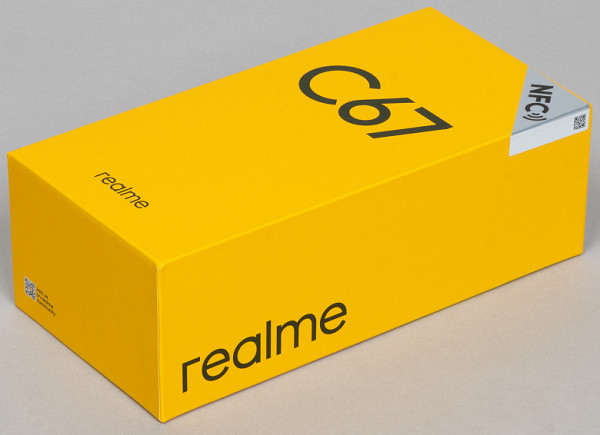
The smartphone comes with a charger with a maximum output power of 33 W, a connection cable and a protective case.
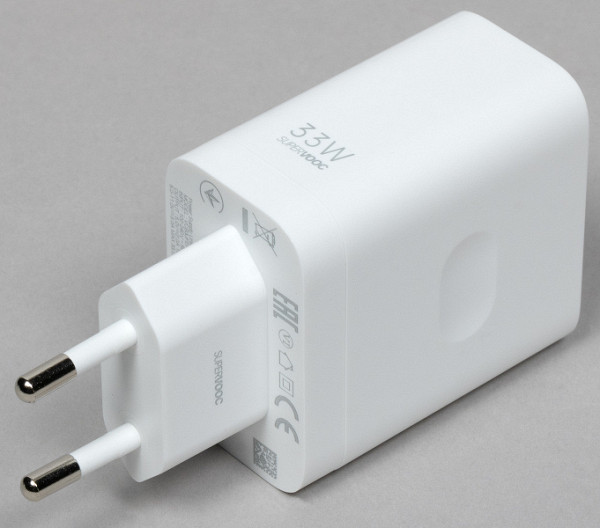
The design of Realme C67 is modern and relevant: the panels and side edges are straight and flat, the transitions are clear and sharp, there are no streamlined or narrowed shapes. Thanks to the wide side frame, the device lies practical and comfortable in the hand.
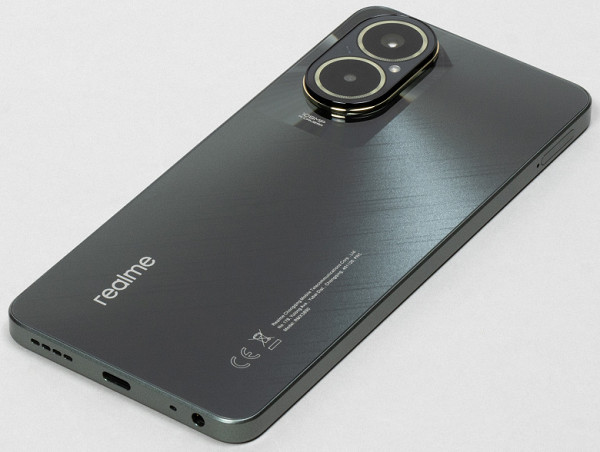
All surfaces are matte, the device does not slip in your hands and is not covered with fingerprints. The weight for such a large device is also small; the smartphone fits comfortably in clothing pockets.
The cameras at the rear are combined into an oval protruding block. Because of this, the device lies unsteadily on a hard surface and sways when working with the screen.
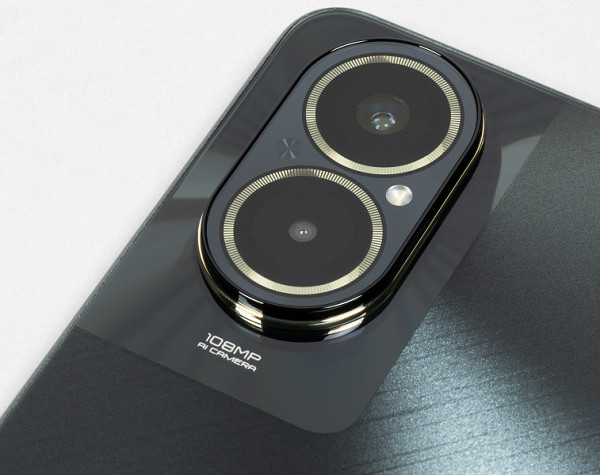
The side buttons are located on the right. They are wide and easy to control, easy to touch. The capacitive fingerprint scanner is integrated into the flat pad of the power and lock button, and it responds quickly and accurately.
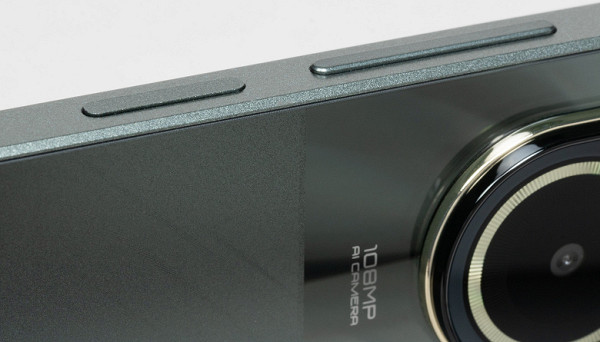
The front camera is single and installed behind a round cutout in the screen matrix at the top center.
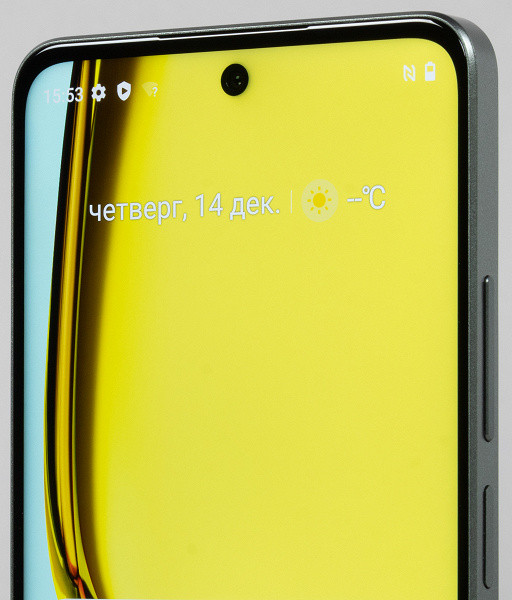
The card tray is triple: you can simultaneously place two Nano-SIM cards and a microSD memory card.

At the bottom end there is a main speaker, a conversational microphone, a USB Type-C connector, as well as a 3.5 mm audio output for the minijack of wired headphones.

At the top end there is a hole for the second speaker.

The model is presented in green and black body colors, their Russian names are “Green Oasis” and “Black Stone”. The case received protection against dust and water splashes according to the IP54 standard.
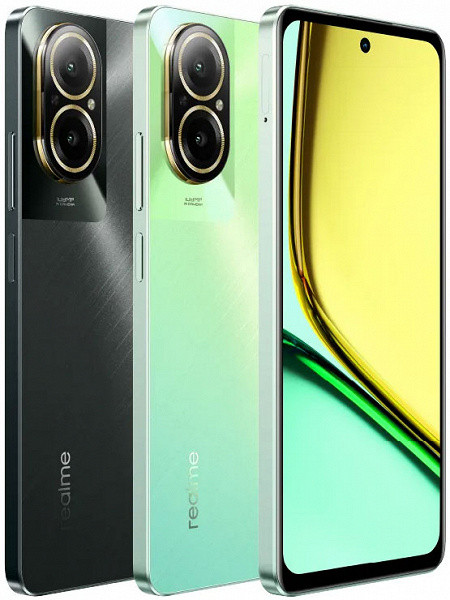
Screen
The Realme C67 smartphone features a 6.8-inch IPS display with a resolution of 1080×2400 (20:9 aspect ratio) and a flat protective glass. The physical dimensions of the screen are 70x156 mm, and the pixel density is 392 ppi. This display supports a 90Hz refresh rate and multi-touch works with support for up to 10 points.
The front surface of the Realme C67 screen is made in the form of a glass plate with a smooth, scratch-resistant surface. The screen's anti-glare properties are slightly better than the Nexus 7's, making it easier to use in bright light. There is an oleophobic coating on the outer surface of the screen, making it more resistant to fingerprints.
The maximum screen brightness is 690 cd/m² in normal conditions and up to 860 cd/m² in bright light when using automatic brightness control. The minimum brightness value is 3 cd/m², which allows you to comfortably use the device in the dark. The automatic brightness adjustment function adequately responds to changing lighting conditions and allows you to adjust the screen brightness to the user's individual preferences.
The Realme C67 smartphone is equipped with an IPS matrix that ensures good screen readability and no flicker at any brightness level.
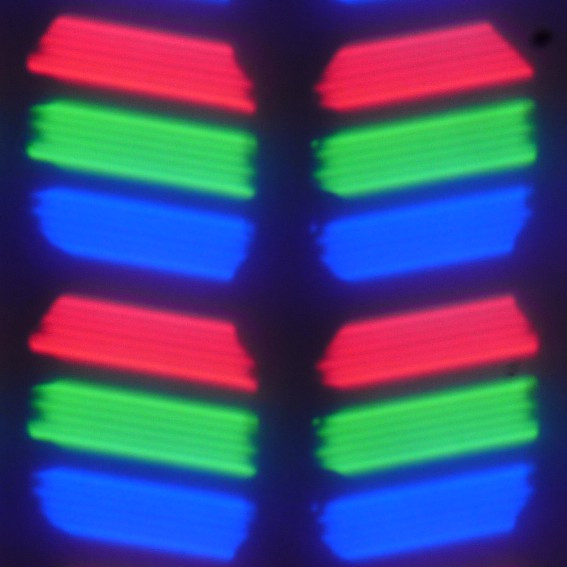
Here are photos showing the screens of a smartphone and Nexus 7 with the same images. The brightness of the screens is initially set to approximately 200 cd/m², and the white balance on the camera is forced to switch to 6500 K.
Photos were taken on a white field using the «Bright» profile.
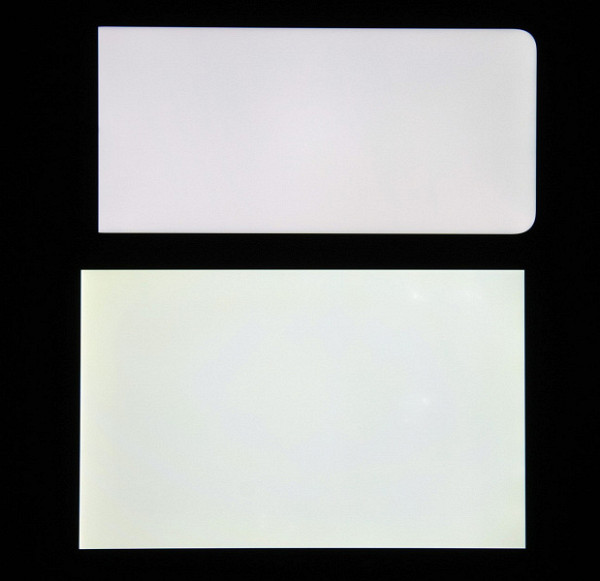
Note the good uniformity of brightness and color tone of the white field.
And a test picture (Soft profile):

Color reproduction is good, colors are moderately saturated, but vary slightly on screens due to differences in color balance. However, it should be remembered that photography cannot be a completely reliable source of information about the quality of color rendering due to the spectral sensitivity of the camera matrix, which does not coincide with human vision.
The photo above shows the screens when the “Soft” profile is activated in the screen settings.
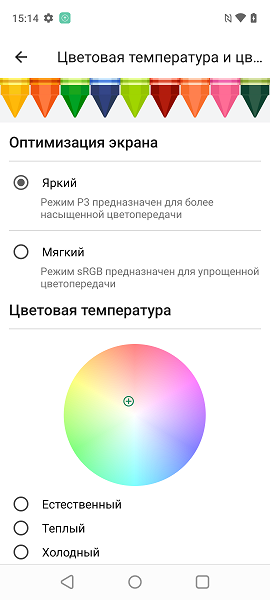
The Bright profile is characterized by increased color saturation:

The smartphone screen has excellent viewing angles, at which colors remain stable even with large deviations of the view from perpendicular to the screen, without distortion or inversion of shades. However, when deviated diagonally, the black field is brightened, but remains a relatively neutral gray, which can be observed with the naked eye.
When viewed perpendicularly, the uniformity of the black field is also good.
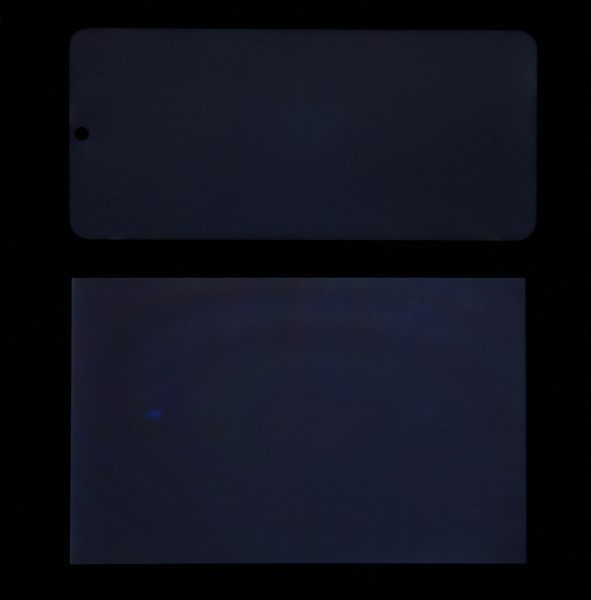
The screen contrast (roughly in the center) is about 1200:1, which indicates a high level of difference between bright and dark areas of the image. The response time when changing colors from black to white and back is 16 ms (8 ms on + 8 ms off). The transition between gray midtones at 25% and 75% of the total brightness takes a total of 26 ms. A gamma curve constructed using 32 equally spaced grayscale points showed no anomalies in either light or dark areas. The power function fitting coefficient is 2.26, slightly higher than the standard value of 2.2, which may darken the image slightly. However, the real gamma curve practically coincides with the power-law dependence.
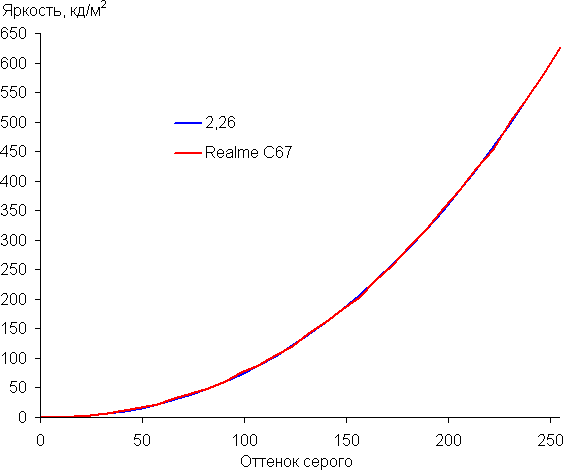
We did not find any dynamic adjustment of the backlight brightness depending on the type of image being displayed, which seems to be a very positive fact.
The color gamut when using the «Vivid» profile slightly exceeds the sRGB standard, and when choosing the «Soft» profile, the gamut narrows to the boundaries of the sRGB standard.
Without correction, the spectra of the components are well separated (but there is some mixing):
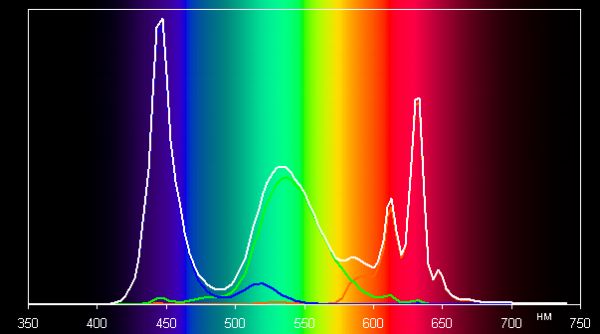
In the case of the Soft profile with maximum correction, the color components are mixed together to a noticeably greater extent:
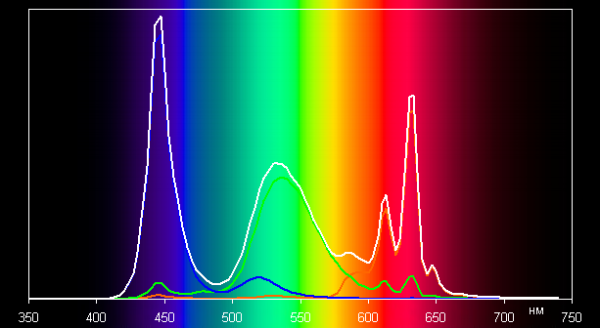
Please note that on wide color gamut screens (uncorrected), regular images optimized for sRGB devices may appear unnaturally saturated. Because of this, it is recommended in most cases to use the «Soft» profile for watching movies, photos and other natural content.
This device has the ability to adjust the color balance by adjusting the hue on the color wheel or choosing one of three preset profiles. Unfortunately, selecting the Soft profile with sRGB coverage locks out these settings. The hue balance after selecting the Vivid profile and manually adjusting the color balance (with a dot on the correction wheel as shown in the image above) is acceptable, since the color temperature approaches the standard 6500 K (without correction — about 8000 K on the white field), and the deviation from the blackbody spectrum (ΔE) remains below 10, which is considered acceptable for a consumer device. (The darkest areas of the gray scale can be ignored because color balance is less important there and the uncertainty in color measurements at low brightness is large.)
While this correction has some benefit, from a practical standpoint it is best to select the Soft profile with sRGB coverage. It is important to note that this function is rather implemented for show, since there is no numerical reflection of the correction, there is no special field for measuring color balance, and changes in color balance are too significant even with minimal movement of the point.
In addition, there is a function to reduce the intensity of the blue component.

It is possible that bright light can disrupt the circadian rhythm, but this is easily resolved by reducing the brightness to a comfortable level, and changing the color balance by reducing blue does not make sense.
In the screen settings, you can activate a mode with an increased refresh rate of up to 90 Hz.

To sum it up, the Realme C67's screen has a high maximum brightness (860 cd/m²) and excellent anti-glare properties, making it suitable for outdoor use on bright sunny days. If necessary, the brightness can be reduced to a comfortable level even in complete darkness (up to 3 cd/m²). Automatic brightness adjustment works adequately. Additional benefits of the screen include an effective oleophobic coating, no flicker, support for high refresh rate mode (90 Hz), high contrast (1200:1), black field uniformity and sRGB color gamut (if the correct profile is selected).
However, it is worth noting some insufficient stability of black color when changing the viewing angle of the screen. In general, given the importance of characteristics for this class of devices, the quality of the screen can be assessed as high.
Camera
Realme C67 shoots with only one rear camera, and the second eye is an auxiliary 2-megapixel module.
The Realme C67 camera features a 108MP sensor and an f/1.8 aperture lens. There is PDAF phase detection autofocus, but there is no optical stabilizer. The Samsung S5KHM6 sensor has a size of 1/1.67 inches and a pixel size of 0.64 microns, using Isocell 2.0 technology and a Nonacell Bayer RGB color filter. This is the first S5KHM6 (Samsung HM6) sensor in the C-series of Realme smartphones on the Russian market.
The camera offers shooting in two modes: with pixel binning (12 megapixels) and in full resolution 108 megapixels. Full-size 108 MP images are interesting because they are almost unprocessed and resemble RAW files: high detail is retained, but there is noise, especially noticeable in low light conditions. Retouched 12-megapixel photos are cleaner and look more attractive, but lose some fine detail.
The overall shooting quality of the Realme C67 is unusually high for a device in the price range of just over 15 thousand rubles. In good lighting, photos have excellent detail, sharpness and contrast. There is no blur in the corners of the frame, and in bright sun or snow, the white balance remains stable and adequate. Shooting in 108 MP mode isn't just for show — full-size images can be used on their own or as a base for digital enlargement, especially after processing to remove noise.
Unfortunately, the Realme C67 exhibits insufficient sensor sensitivity even in evening lighting conditions, which leads to noticeable degradation in image quality. The emphasis on edge sharpening in 12MP photos doesn't help matters, especially when capturing details like the interweaving of branches. While night photography is also not the device's strong suit, the results still outperform many mid-range and even some sub-flagship models thanks to adequate exposure.
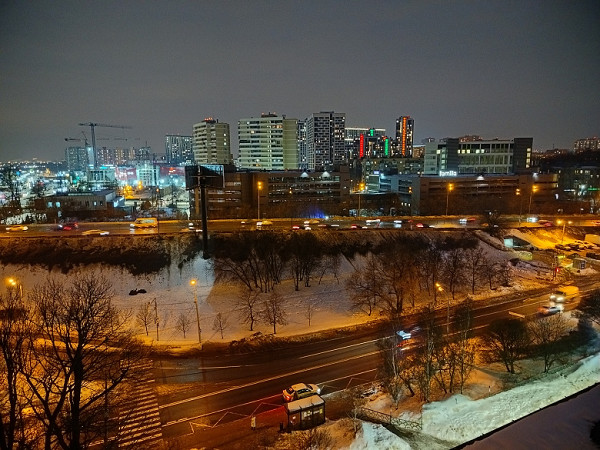
The screen displays icons for 3x and 5x zoom, but it's worth noting that this is a digital zoom. However, the developers claim that at a value of 3x, “intra-sensory zoom” is used, which is significantly superior to digital. This means that the same principle of cropping the central part of a full-size 108-megapixel photo is applied as in other devices. Given the high quality of shooting in 108 MP mode, it is not surprising that the image at 3x zoom remains high-quality, with detail, sharpness and clarity. Although it has been processed to remove noise and fine detail, it still retains plenty of detail. However, at 5x zoom, digital zoom artifacts begin to show, making this mode less attractive.
The 8 MP front camera provides high-quality images with good detail and contrast, without any major drawbacks. Even the background blur function works quite accurately, accurately defining the contour of the face in portrait shots.

The smartphone is capable of recording video in a maximum resolution of 1080p at 30 frames per second. The image quality is quite acceptable when shooting statically: the picture is detailed, sharp and clear, with good color reproduction. However, the lack of an optical stabilizer and the low frame rate spoil the impression: the video does not look very smooth, there is juddering and stroboscopic effects. Unfortunately, the desired higher frame rates, such as 60 fps, are not provided due to processor limitations. However, the image quality itself remains decent. Sound is recorded with acceptable quality, although full noise reduction is lacking.
Telephone and communications
The Realme C67 smartphone supports mobile networks up to 4G. When used within the city of Moscow and its environs, the device demonstrated reliable operation in wireless networks, without losing connection and quickly restoring it after a temporary break.
In addition, the smartphone is equipped with a wireless adapter supporting Wi-Fi 5 (802.11a/b/g/n/ac, 2.4/5 GHz) and Bluetooth 5.2, and also has an NFC function.
The single-channel satellite navigation module supports GPS, Glonass, Galileo and BDS. It is noted that the time to detect the first satellites during a cold start is a little long.
The sound quality of the interlocutor through the volume speaker is high and allows you to hear information clearly. The vibration motor is ordinary, with average power. The built-in sensors, including the gyroscope, function without problems.
Software and multimedia
Realme C67 runs on Android 14 operating system with the latest Realme UI. The interface is fast and functional, but lately it has been constantly hampered by advertising and a large number of pre-installed applications. This problem is especially noticeable in budget models of Realme smartphones. Among the features we can highlight the Dynamic Island function around the front camera, although it has already become quite common among Chinese smartphone manufacturers. The top curtain is not divided into two parts depending on the angle of retraction. Users have access to the official Google store and applications.
The smartphone is equipped with stereo speakers, but the sound quality leaves much to be desired. The volume and frequency range are not impressive, and the sound lacks richness and volume. Supported protocols for wireless headphones include only LDAC and AAC, no aptX and aptX HD. However, there is an audio output for wired headphones.
Performance
Realme C67 is powered by an octa-core Qualcomm SM6225 Snapdragon 685 processor and Adreno 610 GPU. RAM options include 6GB or 8GB, virtually expandable up to 8GB using DRE technology. The built-in storage is available in 128 or 256 GB versions, and also supports memory cards up to 1 TB via a microSD slot. The smartphone also provides connection to external devices via the USB Type-C port in USB OTG mode.
This platform was introduced on March 23, 2023 and uses a 6nm process technology, making it one of the most advanced at the moment. However, its performance can be described as average, since the smartphone scores less than 300 thousand points in the AnTuTu test. Despite this, the device ensures smooth operation of the system, although the camera interface may freeze a little during quick manipulations. This platform is not suitable for demanding games, but popular games such as Call of Duty can still be played on low settings.
Testing in complex tests AnTuTu and GeekBench:
All results obtained during testing of the smartphone were summarized in tables for ease of analysis. Typically, these tables also add results from other devices from various segments, which were also tested on the latest versions of benchmarks. This is done for a more clear comparison of the obtained data. Unfortunately, within the framework of one comparison it is impossible to present results from different versions of benchmarks, so some worthy and relevant models remain outside the scope of the analysis, since they were tested on previous versions of test programs.
| Realme C67 (Qualcomm Snapdragon 685) | Honor X7b (Qualcomm Snapdragon 680 4G) | Tecno Spark 20 Pro (Mediatek Helio G99) | Poco X5 Pro 5G (Qualcomm Snapdragon 778G) | Tecno Pova 5 Pro (Mediatek Dimensity 6080) | |
|---|---|---|---|---|---|
| AnTuTu (v9.x) (bigger is better) | 281219 | 277822 | 383125 | 536193 | 397188 |
| GeekBench 6 (bigger is better) | 471/1515 | 411/1463 | 690/1776 | 941/2640 | 759/2053 |
Testing the graphics subsystem in 3DMark and GFXBenchmark gaming tests:
| Realme C67 (Qualcomm Snapdragon 685) | Honor X7b (Qualcomm Snapdragon 680 4G) | Tecno Spark 20 Pro (Mediatek Helio G99) | Poco X5 Pro 5G (Qualcomm Snapdragon 778G) | Tecno Pova 5 Pro (Mediatek Dimensity 6080) | |
|---|---|---|---|---|---|
| 3DMark Wild Life Extreme Vulkan (bigger is better) | 136 | 123 | 347 | 687 | 368 |
| 3DMark Wild Life Vulkan (bigger is better) | 653 | 450 | 1246 | 2450 | 1327 |
| GFXBenchmark Manhattan ES 3.1 (Onscreen, fps) | 14 | 13 | 23 | 49 | 24 |
| GFXBenchmark Manhattan ES 3.1 (1080p Offscreen, fps) | 16 | 15 | 26 | 56 | 28 |
| GFXBenchmark T-Rex (Onscreen, fps) | 37 | 36 | 56 | 109 | 59 |
| GFXBenchmark T-Rex (1080p Offscreen, fps) | 45 | 41 | 64 | 132 | 69 |
Testing in browser cross-platform tests:
| Realme C67 (Qualcomm Snapdragon 685) | Honor X7b (Qualcomm Snapdragon 680 4G) | Tecno Spark 20 Pro (Mediatek Helio G99) | Poco X5 Pro 5G (Qualcomm Snapdragon 778G) | Tecno Pova 5 Pro (Mediatek Dimensity 6080) | |
|---|---|---|---|---|---|
| Google Octane 2 (bigger is better) | 13726 | 14930 | 23502 | 27070 | 19194 |
| JetStream (bigger is better) | 50 | 56 | 72 | 73 | 50 |
Heat
We test for performance degradation when heated using the Burnout Benchmark program, which allows you to load the CPU, GPU and NPU:
| Stress on | Heating performance as a percentage of maximum |
|---|---|
| CPU | 35% |
| GPU | 75% |
| NPU | 23% |
Battery life
Realme C67 is equipped with a 5000 mAh battery that provides high battery life.
For testing, we selected the normal power consumption mode without using power saving functions, although such functions are also available in the device. Test conditions included a minimum comfortable brightness level (approximately 100 cd/m²). The tests included the following activities: continuous reading in the Moon+ Reader application using the standard light theme, continuous viewing of HD video (720p) over a home Wi-Fi network, and the game Injustice 2 with automatic graphics settings.
| Battery capacity | Reading mode | Video mode | 3D Game Mode | |
|---|---|---|---|---|
| Realme C67 | 5000 mAh | 23 h. 00 m. | 21 h. 00 m. | 7 h. 30 m. |
| Honor X7b | 6000 mAh | 27 h. 00 m. | 23 h. 00 m. | 8 h. 30 m. |
| Tecno Spark 20 Pro | 5000 mAh | 17 h. 00 m. | 14 h. 30 m. | 7 h. 00 m. |
| Tecno Pova 5 Free Fire | 6000 mAh | 22 h. 30 m. | 16 h. 30 m. | 7 h. 30 m. |
| Poco X5 Pro 5G | 5000 mAh | 18 h. 00 m. | 20 h. 00 m. | 7 h. 00 m. |
| Realme 10 Pro+ 5G | 5000 mAh | 19 h. 00 m. | 18 h. 00 m. | 5 h. 00 m. |
| Xiaomi 12T | 5000 mAh | 19 h. 00 m. | 16 h. 00 m. | 6 h. 00 m. |
All these data represent the maximum possible values achieved under «ideal» conditions, including no SIM cards installed. Any changes in the way the device is used will likely result in decreased results.
Using the included mains charger, the smartphone is fully charged in 1 hour 40 minutes. Wireless charging is not supported.
Bottom line
The Realme C67 smartphone, despite its low cost, offers decent features that correspond to its price segment. While its Qualcomm processor isn't the most powerful and the IPS screen may be less impressive compared to AMOLED, the device makes up for these limitations with its outstanding 108-megapixel camera. The shooting quality on this budget smartphone exceeds expectations, especially in the 108MP mode, providing excellent zoom without the need for a true telephoto lens. The only noticeable drawback is the relatively weak video recording. However, given the high autonomy of the device, the Realme C67 is well worth its price and may even exceed expectations if the user is willing to accept these limitations.

